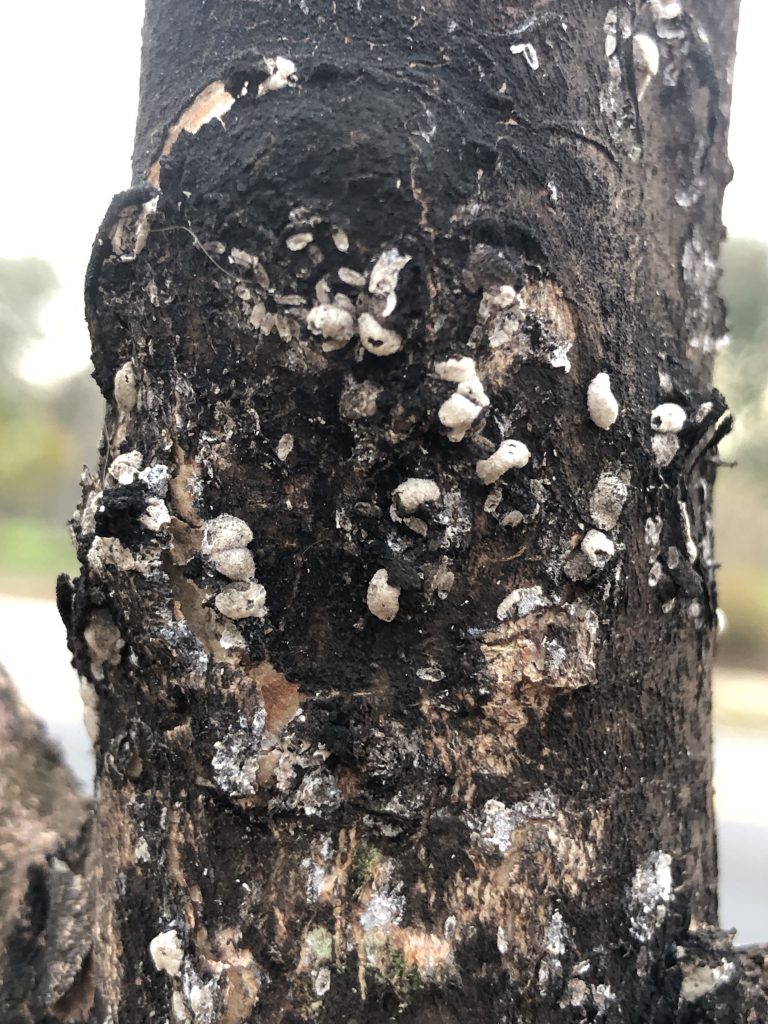Being a gardener in Florida is exciting. We have many plants to choose from and the weather is mostly pleasant but always seeming to surprise us. One disadvantage of living in such a place, in addition to having so many growing zones, landscape nurseries, and major shipping ports, is that invasive species that land in Florida don’t like to leave. One newcomer in the lineup of invasive pests is the crape myrtle bark scale (Acanthococcus lagerstroemiae). This invasive insect pest made its way from Texas and, as of a few weeks ago, the only Florida sighting had been in Santa Rosa County. Unfortunately, this pest has now been confirmed in Leon County. Landscapers and gardeners in north Florida should learn how to identify this pest and what options are available for control.
The crape myrtle bark scale, as the name suggests, has a pretty specific host – the crape myrtle (Lagerstroemia spp.). However, in the United States, this scale has also been found feeding on our native beautyberry (Callicarpa americana). Due to the widespread planting of crape myrtles, these should be the gardeners primary focus when looking for this new pest. If present on the tree, it is hard to miss. These scales feed on the bark and are a snow-white color. Being a scale, they produce honeydew that is then covered in black sooty mold. So, if you see a crape myrtle with black branches, look closely and you may see the white scales. If you crush these scales and they leave a pink goo on your fingers, then you very likely have crape myrtle bark scale. Of course, you can send a picture or sample to your local county extension office for confirmation.

If you do happen to find crape myrtle bark scale in your own landscape, or one that you manage, proper control is important to prevent it from moving along any further. Since scales suck on sap and are protected by an outer shell, systemic insecticides are the preferred product for effective control. These include the neonicotinoids, such as imidacloprid (Merit) and dinotefuran (Safari). The larval stage can be controlled with a horticultural oil, sometimes mixed with another insecticide like bifenthrin (Talstar), however, this will not control the adults. Another option is to completely remove the tree and burn all of the plant material.

The crape myrtle bark scale can significantly reduce the aesthetic value of crape myrtles due to the black sooty mold that covers the bark. It is also known to reduce flowering and can lead to thinning of leaves. Since crape myrtles make up a big part of our managed landscapes, let’s all work together to scout for this pest and control it when found. If you have questions, please contact your local county extension office.

For more information, please see this UF/IFAS document and this Clemson website for more photos and control information.
- Let Extension Diagnose Your Landscape Issues - May 28, 2025
- No Mow March 2025! - February 27, 2025
- New Year’s Resolution Ideas for Gardeners - January 16, 2025
